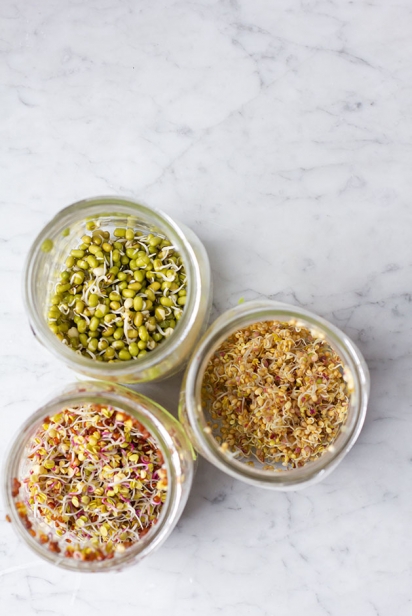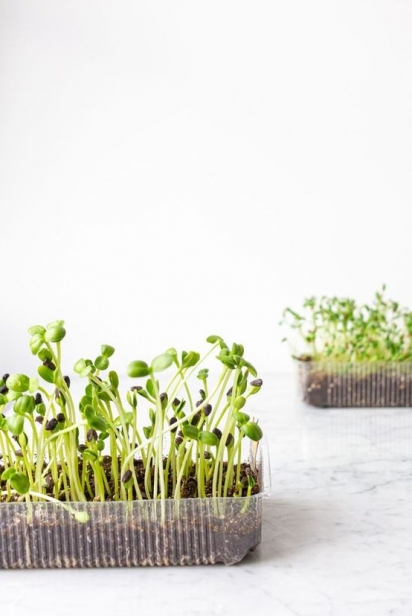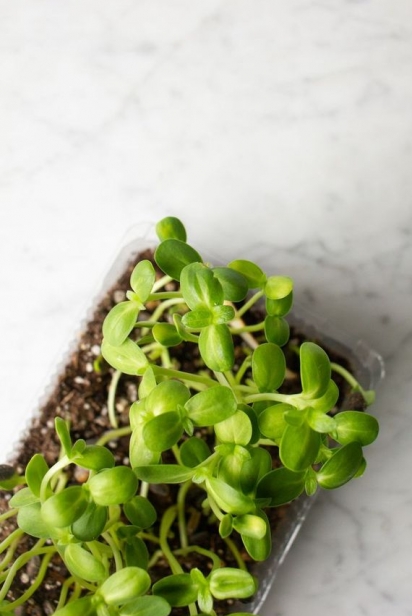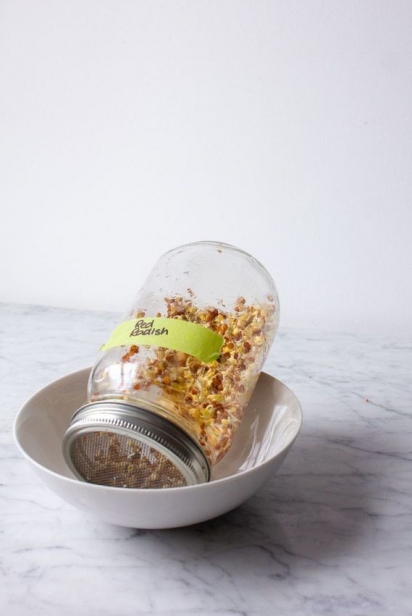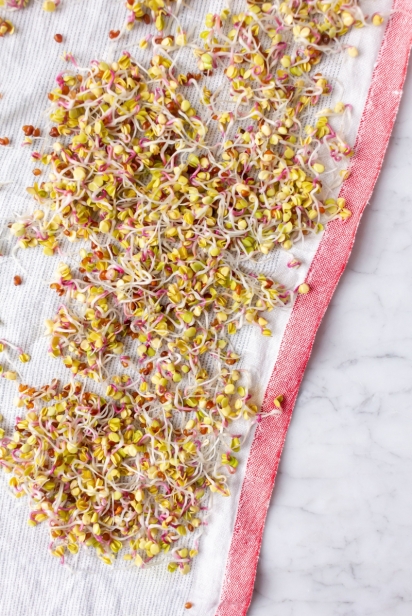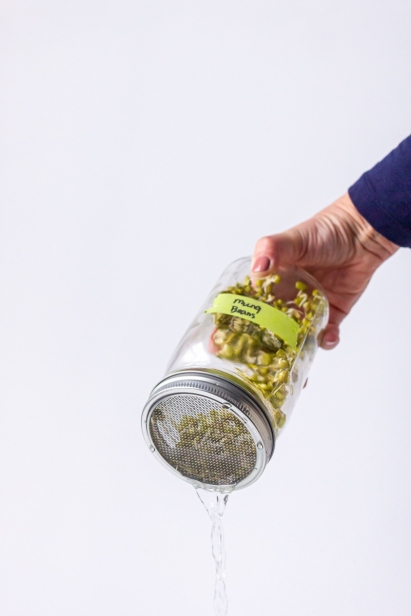Get Your Green On
At this time of year, we’re all itching to get out in our gardens. But before the first plants sprout outside, there’s an excellent way to get your greens that provides great flavour and nutrition and a fun and easy way to experiment with growing at home.Microgreens, the young leaves of vegetable plant, are usually grown in a shallow layer of soil and take up to three weeks to grow. The plants are harvested when the first leaves emerge.
You can purchase microgreens cut or in trays or grow your own. You may wish to invest in artificial growing lights for the best results, but a sunny window will also work. Many seeds grown as sprouts can also be grown as microgreens. Favourites often include basil, arugula and sunflower — which taste like carrots — pea shoots, radish, broccoli, beet and watercress.
Microgreens lend a bold burst of green to dishes of all sorts and are high in minerals such as potassium, iron, zinc, magnesium and copper. Some studies have shown that microgreens may contain more nutrients than their fully grown counterparts.
Sprouts are germinated seeds that have formed young shoots. They grow quickly, usually within two to five days, by their introduction into a moist environment, away from direct sunlight. They don’t need soil; unlike microgreens, they do not have true leaves. The range of sprouts is vast and extends beyond the typical alfalfa we often see, including red radish, yellow mustard, mung beans, lentils and peas. Wheat and other grains can also be sprouted.
Like microgreens, sprouts are high in nutrition, with high levels of protein, folate and minerals such as magnesium and calcium, as well as vitamins C and K.
Raise your own sprouts
Sprouts are easy and quick to raise and require minimal equipment. Many grocery store beans and lentils have been irradiated, which prevents them from sprouting, so for best results, look for sprouting seeds sold at a health food store or garden centre.
Add a few tablespoons to a Mason jar fitted with a metal screen sprouting lid or a piece of cheesecloth. Cover the seeds with water to three times their height and soak them for four to eight hours, depending on the size of the seeds. Tiny seeds such as mustard seeds need less time than larger seeds such as peas or mung beans.
After soaking, drain the water through the sprouting lid. Rinse and drain with fresh water and swirl the seeds around in the jar so that they stick to the side of the jar. Invert the jar by propping it on an angle in a bowl so that any excess water can drain through the sprouting lid. Keep the jar on your kitchen counter out of direct sunlight.
Rinse, drain and swirl the seeds two to three times a day. After a day or two, you’ll see the white tail called the endosperm emerging from the seed. Continue caring for your sprouts, rinsing and draining in this manner until the tail is at least 1/2-inch long.
To harvest the sprouts, rinse them thoroughly. On this final rinse, you’ll notice that you may have hulls (the covers of the seed) clumping together. Some sprouts, such as radishes and broccoli, can be tough, so you may wish to remove the hull. You can usually scoop them out as they float to the top of the water. Sometimes it is easier to put the sprouts into a larger bowl and swish them around to separate the hulls. Drain the sprouts thoroughly and lay them on a kitchen towel to air dry.
When dry, line a sealable glass container with a kitchen towel and place the sprouts inside. Cover and refrigerate. Consume within one week.
Sprouts lend themselves to a host of applications. Some sprouts, such as radish and mustard, have a spicy quality that lends an instant punch of flavour to anything you make, while others, such as peas and broccoli, have a sweet taste similar to their adult selves. Here are just a few ways to use them:
• Layer hummus on toast and top with radish sprouts.
• Stir into scrambled eggs.
• Cook them in stir-fries.
• Sandwiches, sandwiches, sandwiches
• Use them to add texture and spicy flavour to green salads.
Sprouted mung beans or lentils make an excellent salad in themselves. Add your favourite dressing, a bit of onion and a handful of herbs and enjoy.


